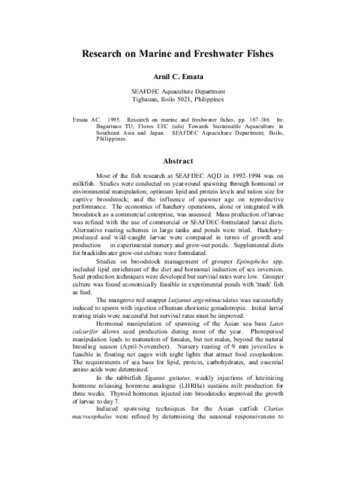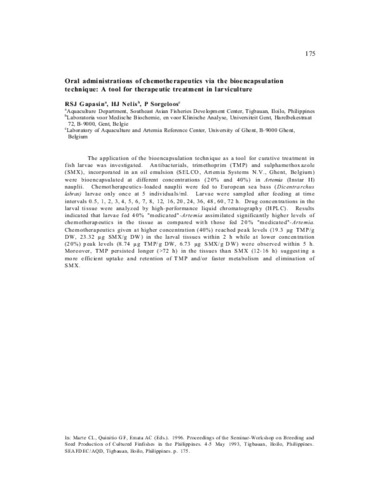Antioxidant activities and selenogene transcription in the European sea bass (Dicentrarchus labrax) liver depend, in a non-linear manner, on the Se/Hg molar ratio of the feeds
| dc.contributor.author | Espino, Marinelle | |
| dc.contributor.author | Eguiraun, Harkaitz | |
| dc.contributor.author | Diaz de cerio, Oihane | |
| dc.contributor.author | Carrero, Jose Antonio | |
| dc.contributor.author | Etxebarria, Nestor | |
| dc.contributor.author | Martinez, Iciar | |
| dc.date.accessioned | 2021-12-03T06:35:39Z | |
| dc.date.available | 2021-12-03T06:35:39Z | |
| dc.date.issued | 2022-05 | |
| dc.identifier.citation | Espino, M., Eguiraun, H., Diaz de Cerio, O., Carrero, J. A., Etxebarria, N., & Martinez, I. (2022). Antioxidant activities and selenogene transcription in the European sea bass (Dicentrarchus labrax) liver depend, in a non-linear manner, on the Se/Hg molar ratio of the feeds. Biological Trace Element Research, 200, 2365-2379. https://doi.org/10.1007/s12011-021-02835-7 | en |
| dc.identifier.issn | 1559-0720 | |
| dc.identifier.uri | http://hdl.handle.net/10862/6243 | |
| dc.description.abstract | Feeding 3.9 and 6.7 mg Hg/kg (Se/Hg molar ratios of 0.8 and 0.4, respectively) for 14 days negatively affected Dicentrarchus labrax growth and total DNTB- and thioredoxin-reductase (TrxR) activities and the transcription of four redox genes (txn1, gpx1, txnrd3, and txnrd2) in the liver, but a diet with 0.5 mg Hg/kg (Se/Hg molar ratio 6.6) slightly increased both reductase activities and the transcription of txn1, gpx1, and txnrd2. Feeding 6.7 mg Hg/kg for 53 days downregulated the genes of the thioredoxin system (txn1, txnrd3, and txnrd2) but upregulated gpx1, confirming the previously proposed complementarity among the antioxidant systems. Substitution of 20% of the feed by thawed white fish (hake) slightly counteracted the negative effects of Hg. The effects were not statistically significant and were dependent, in a non-linear manner, on the Se/Hg molar ratio of the feed but not on its Hg concentration. These results stress the need to consider the Se/Hg molar ratio of the feed/food when evaluating the toxicity of Hg. | en |
| dc.description.sponsorship | Open Access funding provided thanks to the CRUE-CSIC agreement with Springer Nature. The work was supported by grants from the Spanish MINECO (RTC-2014–2837-2- “SELATUN: Minimización de la problemática del mercurio del atún y valorización del atún como alimento saludable, Programa Retos-Colaboración 2014” and CTM2012-40203-C02-01- “BMW: Biomarcadores estándar de base científica en mejillón para diagnosticar y monitorizar los efectos biológicos de la polución en el Golfo de Bizkaia: implementación de la DEME”), Euskampus Fundazioa-Campus of International Excellence (307615SAA2), and from the Basque Government Elkartek Grant KK-2016/00057- “MAROMEGA: Nuevas alternativas para la producción de omega-3 a partir de recursos marinos.” | en |
| dc.language.iso | en | en |
| dc.publisher | Springer | en |
| dc.rights | Attribution 4.0 International (CC BY 4.0) | * |
| dc.rights.uri | http://creativecommons.org/licenses/by/4.0/ | * |
| dc.subject | Mercury (Hg) | en |
| dc.subject | Selenium (Se) | en |
| dc.subject | Thioredoxin reductase | en |
| dc.subject | Selenogene transcription | en |
| dc.subject | Dicentrarchus labrax | en |
| dc.subject | sea bass | en |
| dc.subject | glutathione peroxidase | en |
| dc.title | Antioxidant activities and selenogene transcription in the European sea bass (Dicentrarchus labrax) liver depend, in a non-linear manner, on the Se/Hg molar ratio of the feeds | en |
| dc.type | Article | en |
| dc.identifier.doi | 10.1007/s12011-021-02835-7 | |
| dc.citation.volume | 200 | en |
| dc.citation.spage | 2365 | en |
| dc.citation.epage | 2379 | en |
| dc.citation.journalTitle | Biological Trace Element Research | en |
| dc.subject.asfa | feeds | en |
| dc.subject.asfa | selenium | en |
| dc.subject.asfa | mercury | en |
| dc.subject.asfa | seafoods | en |
| dc.subject.asfa | fish | en |
| dc.subject.asfa | feeding | en |
| dc.subject.asfa | antioxidants | en |
| dc.subject.scientificName | Dicentrarchus labrax | en |
このアイテムのファイル
このアイテムは次のコレクションに所属しています
-
Journal Articles [1258]
These papers were contributed by Department staff to various national and international journals.






